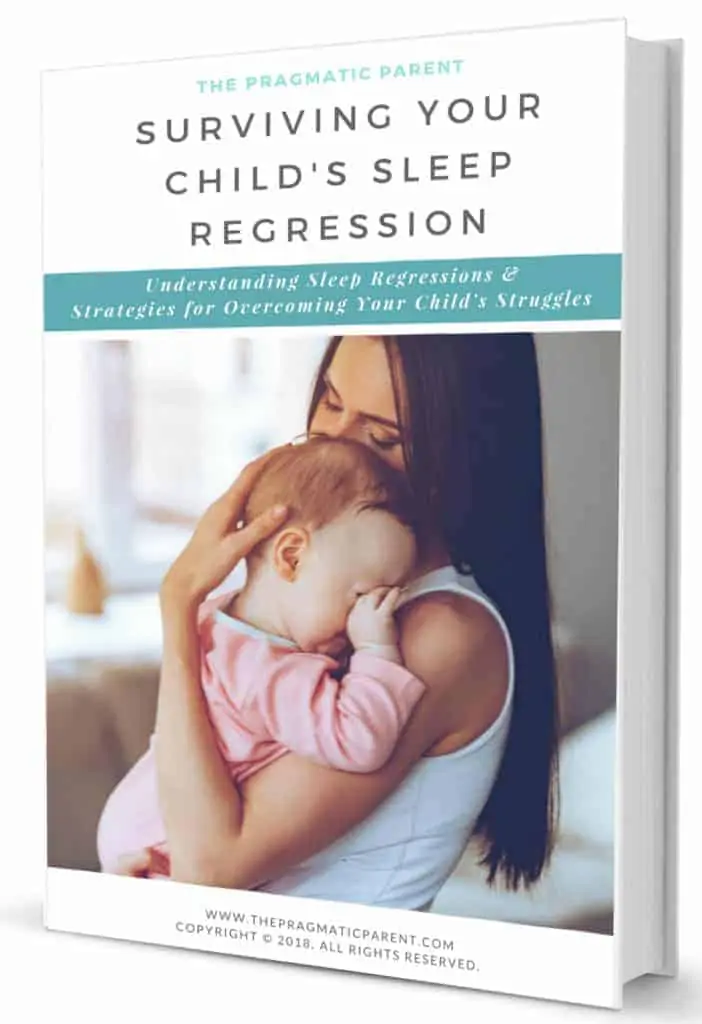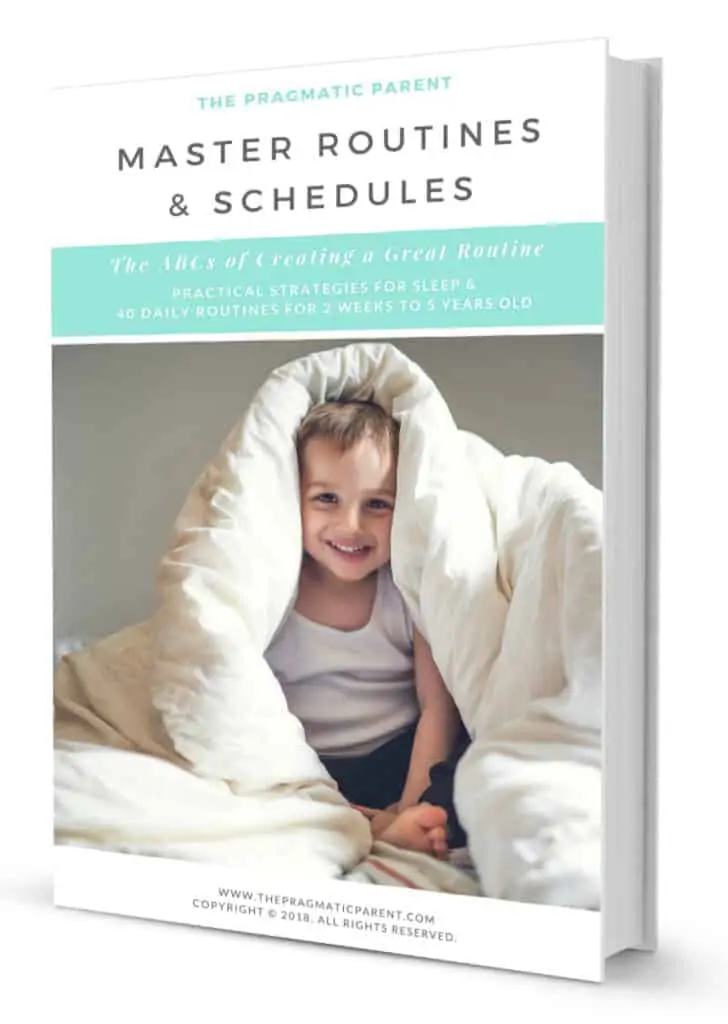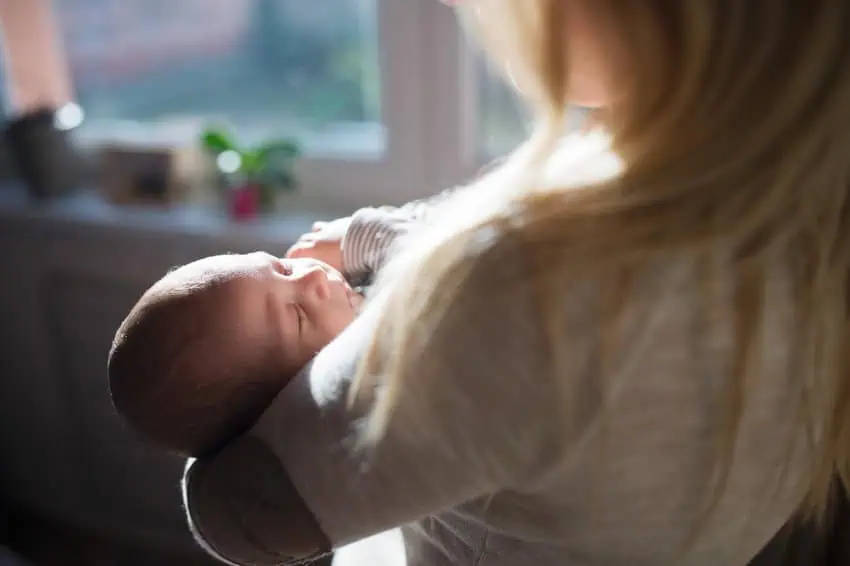Are you ready to start looking into the different types of sleep training? Is your baby ready to sleep train? Are you ready for more sleep yourself? The first place to start with any changes to sleep is your daily routine. If you want to skip ahead, there are 40 pre-made routine templates in Mastering Sleep & Schedules perfect for baby through the elementary school years and will be your constant companion for years to come!
Before you consider any of these sleep training methods, please read this article to see if your baby is ready to sleep train. Readiness signs your baby meets the cognitive and physical developmental milestones will let you know if your baby is both ready and able to sleep through the night with a little gentle guidance.
This article will give you an overview of several sleep training methods you can consider to finding the best approach for your family. There is not one sleep training method that works and meets every parenting philosophy.
Remember, your parenting philosophy, baby’s temperament, and physical and cognitive development should all be taken into consideration when you’re trying to decide what method of sleep training to take.
Whether you chose the fading method, no cry method, gentle cry it out or cry it out, or a combination of these, always follow your instincts.
Do what you feel is best for your baby, and your family but remember, if your baby is in pain, dirty or wet then it’s always OK to comfort your baby and he shouldn’t be ignored no matter what approach you’re taking.
Different Baby Sleep Training Methods to Consider
Fading Sleep Training Method
Using the fading method allows you to continue as you’ve been with your baby, but slowly cutting back – or fading – until he’s able to wean away from all nighttime aids, feedings and waking on his own.
This is a very gentle approach to sleep training and results are generally very gradual.
Let’s use the example that your baby is rocked to sleep and back to sleep for nap and bedtime. This is how you would apply the fading method:
- Do not rock your baby until he falls asleep. Stop rocking until he is drowsy and place him in his crib to fall asleep on this own.
- When your baby wakes up, gently rock him but again, place him to sleep drowsy.
- After a few nights, trim the time you spend rocking even more.
- Every time he wakes, rock him a little bit less, still placing him to bed drowsy and not fully asleep.
- Eventually you’ll get to the point where you are cutting out the rocking all together and only placing him in the crib drowsy.
- This will help you soothe him to sleep – and back to sleep – while he’s lying down and may be patting his back or shushing him, having eliminated rocking him to sleep all together.
- You’ll begin to fad out all soothing until he’s able to soothe himself to sleep on his own.
- Gently do less and less until he falls asleep independently.
Gentle Cry It Out
Gently crying or controlled crying, is when you let your baby cry in small intervals of time and go in to check on them and offer a little soothing while teaching your baby how to self soothe as well.
Gently Cry It Out Looks Like This:
- Your baby wakes up crying in the middle of the night.
- You wait one minute before going into the room and gently pat him on the back and offer your comfort. Try not to pick your baby up, but gently help soothe him by patting or rubbing his back and shushing. Leave the room and let him fall back to sleep on his own. Offer as little stimulation as you can, you don’t want to wake up your baby further.
- Your baby starts crying again. Wait two minutes before going in this time.
- Your baby starts crying again. Wait three minutes before going in this time.
Often parents will set a time limit – or a minute mark, maybe 5 minutes – before going in and picking up their baby and soothing him.
Set a timed goal for yourself and your baby, but on the first night, set low expectations as you introduce gently crying to your baby. Break down
Consistency is key to this method. You may make it through nap and bedtimes for three days and then make an exception, but it’s key to stick with it and not send mixed messages like “just this one time” to your baby. Sleep training, no matter what approach you take, requires consistency sticking with your method.
Controlled Cry It Out
Controlled crying means you go in to check on your baby at intervals and you may put a limit on the amount of crying your baby experiences. Controlled crying may mean you let your baby cry for 10 minutes, 20 minutes or a set amount of time, before you go comfort him.
Controlled crying does not mean you shut the door and let your baby cry all night long. It’s important to always set reasonable expectations for your baby. Do you want them to sleep for 8 hours, 10 hours or 12 hours straight? Do you just want them to stop waking for feedings every 2 hours at 6 months old and is a 7 or 8 hour stretch considered a success?
For me personally, when my twins slept for 12 hours, but would still wake once for a 10-minute feeding and put themselves back to sleep, this was a success.
Define what you think is a success – maybe it’s an all-night sleeper or one bottle a night, but what are your limits to crying as you both work towards achieving this.
Cry It Out
This is usually a parent’s last resort after they’ve tried gentler methods. I want to be clear that Cry It Out should never be where you shut the door and leave your baby for 12 hours straight.
If he is hungry, dirty, wet, sick or in pain, never let them cry it out. Go to your baby.
It’s also not a replacement for feeding – if your baby is not old enough, big enough, or able to sleep all night without food comfortably, this shouldn’t be an option you consider.
Cry It Out isn’t about teaching your baby how to sleep, it’s about breaking sleep aids and associations he has such as rocking to sleep, using a pacifier, nursing to sleep or other crutches. Sometimes these sleep associations have become a bad habit gone on too long and must be broken. Crying it out may be your last resort.
When your baby cries it out, you’re teaching him to self soothe and find a way to fall asleep without the sleep associations he’s becomes accustomed too.
There is no magic again for sleep training – each baby has their own development and temperament and you know your baby best.
Is your baby capable of putting himself back to sleep but WANTS you to help him out? Remember wants versus needs… does your baby want you to put him to sleep or need him to help put him to sleep? If he is old enough to WANT you to help put him to sleep by rocking, nursing, bouncing, etc. this is an indicator it’s the right time to sleep train.
When you decide to go the Cry It Out route, it’s important to stick with it through the long haul. It’s unfair and will confuse your baby if you start the cry it out method and then give him a pass for a few days.
A few tips:
- Never let a baby who is swaddled cry it out. Giving them access to their fingers to self-soothe is important.
- Make sure your baby is in good health. Behavior that’s cropped up recently such as sickness, possible ear infection, teething, reflux make it unfair to start any sleep training.
Be Consistent With Sleep Training
Consistency is crucial to the success of your baby’s sleeping. Try to schedule sleep training at a time where distractions are limited. Visiting family, holidays, time changes, growth spurts, illness, and family dynamics are all distractions to your daily and bedtime routine and will affect your baby’s sleep. Everyday distractions such as a rowdy sibling, barking dog, doorbell or delivery can hinder sleeping but stay consistent in your sleep training to overcome minor distractions.
Need a little extra help starting or adjusting your daily routine? Here’s a FREE Course that will help you take control & bring more peace to your home.
Sleep Resources: From Creating a Daily Routine to Sleep Regressions
For a thorough explanation and resource of keeping a routine, Check out the Mastering Sleep & Schedules Ebook which is 100-pages of jam-packed information and 40+ sample routines. All the tools, sa
mple schedules, sleep tracker and strategies for every age and stage of development for 2 weeks to 5-years-old.
Learn how to start creating a routine, establishing wake up and bedtimes, strategies for working through nap transitions, prepping for daylight savings time to keep your routine on track and logging your baby’s sleep patterns… all helping you rock a routine and simplify life when your days flow.
Surviving Your Child’s Sleep Regressions Ebook
Additional Information on This Topic
- 5 Signs Your Baby is Ready for Sleep Training
- Expert Tips to Surviving the 8 Month Sleep Regression
- Signs It’s Time to Move to One Nap a Day: How to Master the Nap Transition
- How to Ease Separation Anxiety in Babies, Toddlers & Preschoolers
- 8 Common Toddler Sleep Problems & How to Handle Them
- Toddler Sleep Regressions: What You Need to Know About Your Two Year Old’s Sleep
- How to Establish a Peaceful Bedtime Routine for Your Baby
- How to Survive the 18 Month Sleep Regression & 2 Year Sleep Regressions
- Comprehensive Sleep Charts & Sleep Guidelines for Infants Through Adolescents
- The Benefits of Having a Daily Routine
Want even more?
Shop All Parenting Resources
Shop all of our parenting resources from self-regulation tools and managing big emotions to building self esteem and confidence. There are resources for all seasons of life!











